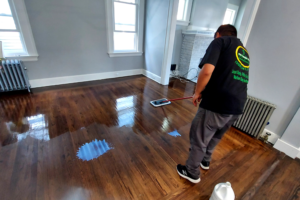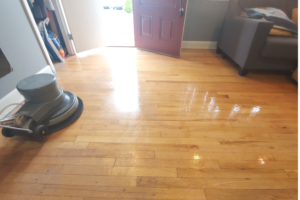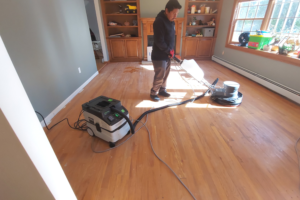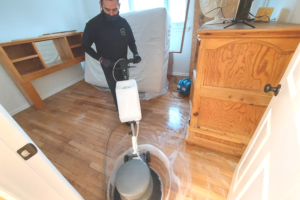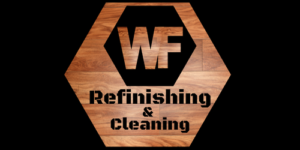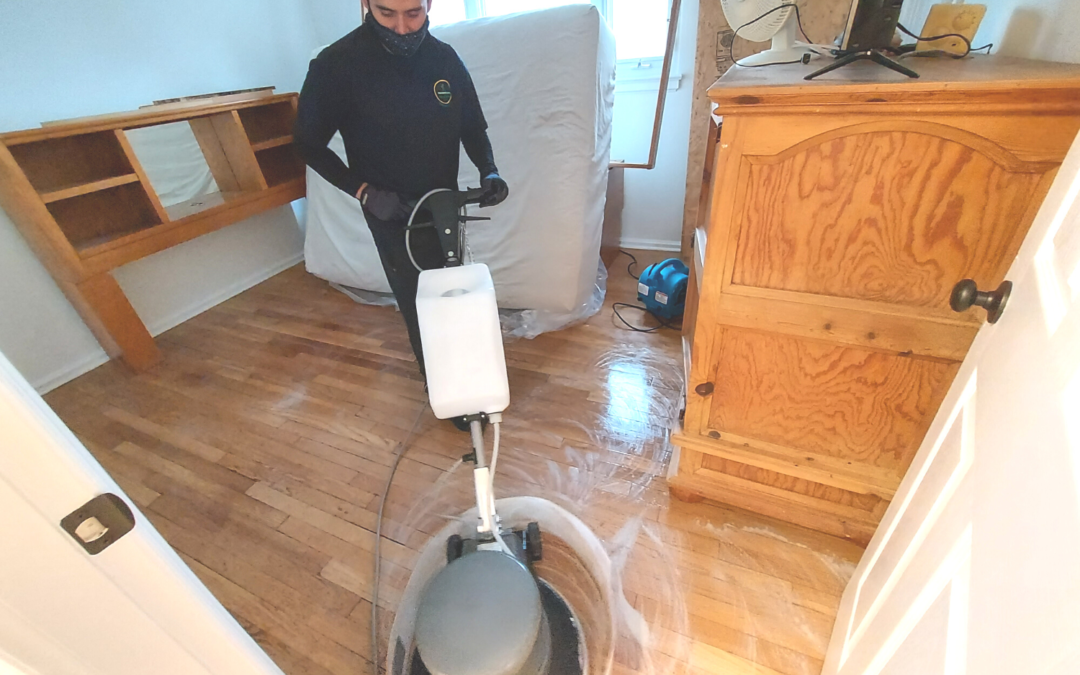How to remove wax build up on wood floors
Mix 6 to 8 oz of industrial floor wax remover in 1 gallon of hot water is the fastest and efficient way to dissolve and remove wax from floors. Using a mop, apply the solution to the floor and allow it to sit in for a few minutes or until the wax softens and convert back to the liquid form.
Using a scrub brush, scrub the surface in a circular motion. You can also remove the wax using an ultra-fine steel wool pad.
Finally, use clean water to mop and rinse the solution off the floor.
Wax build-up on wood floors
can be a common problem that diminishes the beauty and luster of your flooring. Over time, layers of wax can accumulate, creating a dull, sticky surface. Fortunately, there are effective ways to remove wax build-up and restore the natural beauty of your wood floors. In this article, we will explore do-it-yourself (DIY) methods for wax removal, discuss the advantages of hiring a professional, and provide a list of equipment and materials required for the task.
DIY Removal Techniques and the Benefits of Hiring Professionals
DIY Wax Removal Techniques: If you’re inclined to tackle the wax removal process yourself, here are the steps to follow:
Gather the necessary equipment and materials:
-
-
- Soft-bristle broom or vacuum cleaner
- Microfiber cloth or mop
- Warm water
- Mild wood floor cleaner
- Professional Floor Stripper
- Soft towels
-
-
- Remove loose debris: Sweep or vacuum the floor to remove loose dirt, dust, and debris. This step prevents scratching the floor during the cleaning process.
- Dilute the cleaning solution: Mix a small amount of mild wood floor cleaner with warm water according to the manufacturer’s instructions. Avoid using excessive amounts of water, as it can damage the wood.
- Test the cleaning solution: Before applying the cleaning solution to the entire floor, test it on a small inconspicuous area to ensure it does not cause any discoloration or damage.
- Apply the cleaning solution: Dampen a microfiber cloth or mop in the cleaning solution and wring out any excess liquid. Gently wipe the affected areas of the floor, ensuring the cloth or mop is only slightly damp, not wet.
- Focus on stubborn areas: For particularly stubborn wax build-up, you can add a small amount of white vinegar or ammonia to the cleaning solution. However, exercise caution and refer to the manufacturer’s instructions, as vinegar and ammonia can affect certain types of wood finishes.
- Rinse and dry the floor: Once you have thoroughly cleaned the waxed areas, rinse the floor with clean water using a mop or cloth. Dry the floor completely with soft towels to avoid water damage.
- Repeat if necessary: If there is still wax residue on the wood floor, repeat the process until the build-up is completely removed.
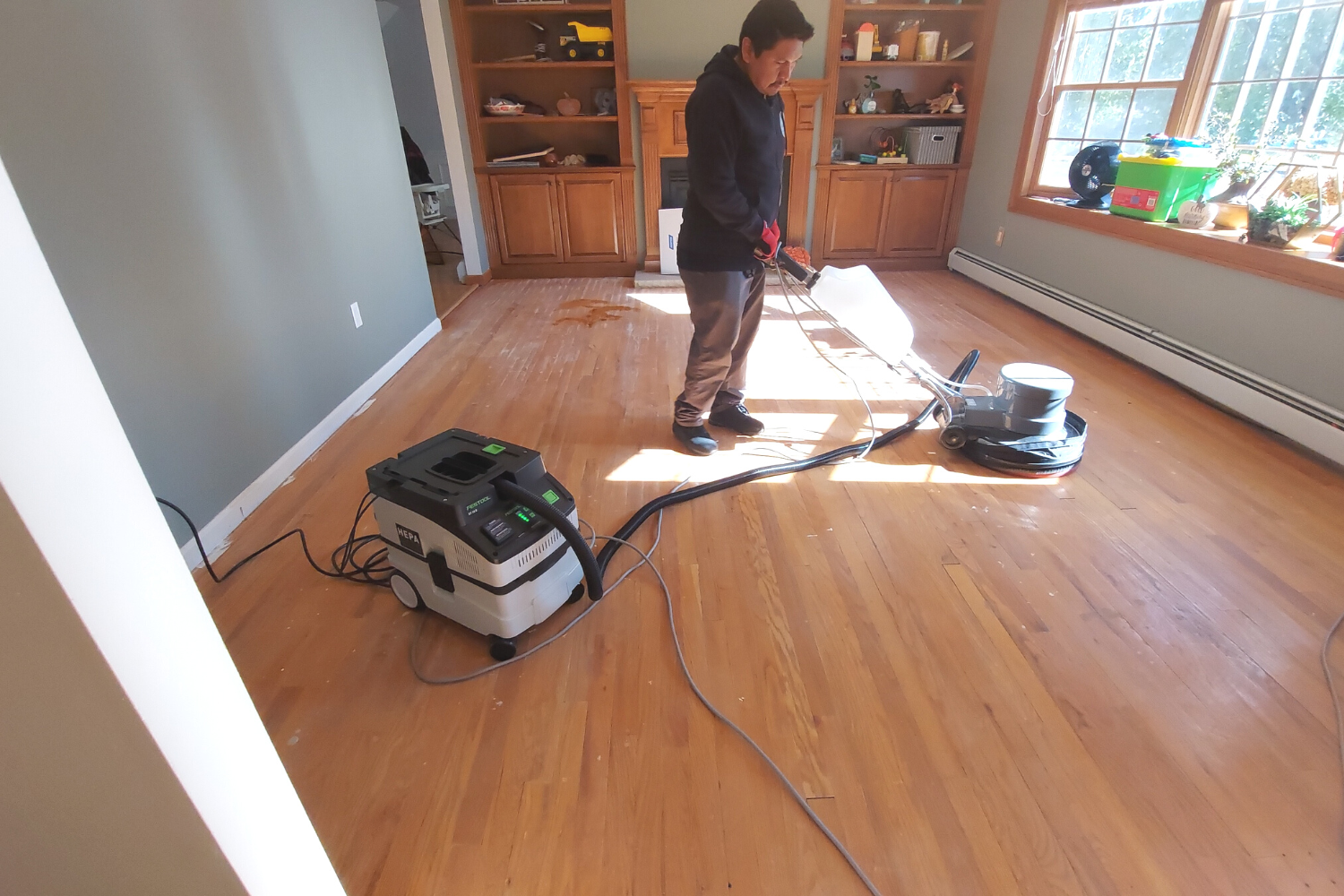
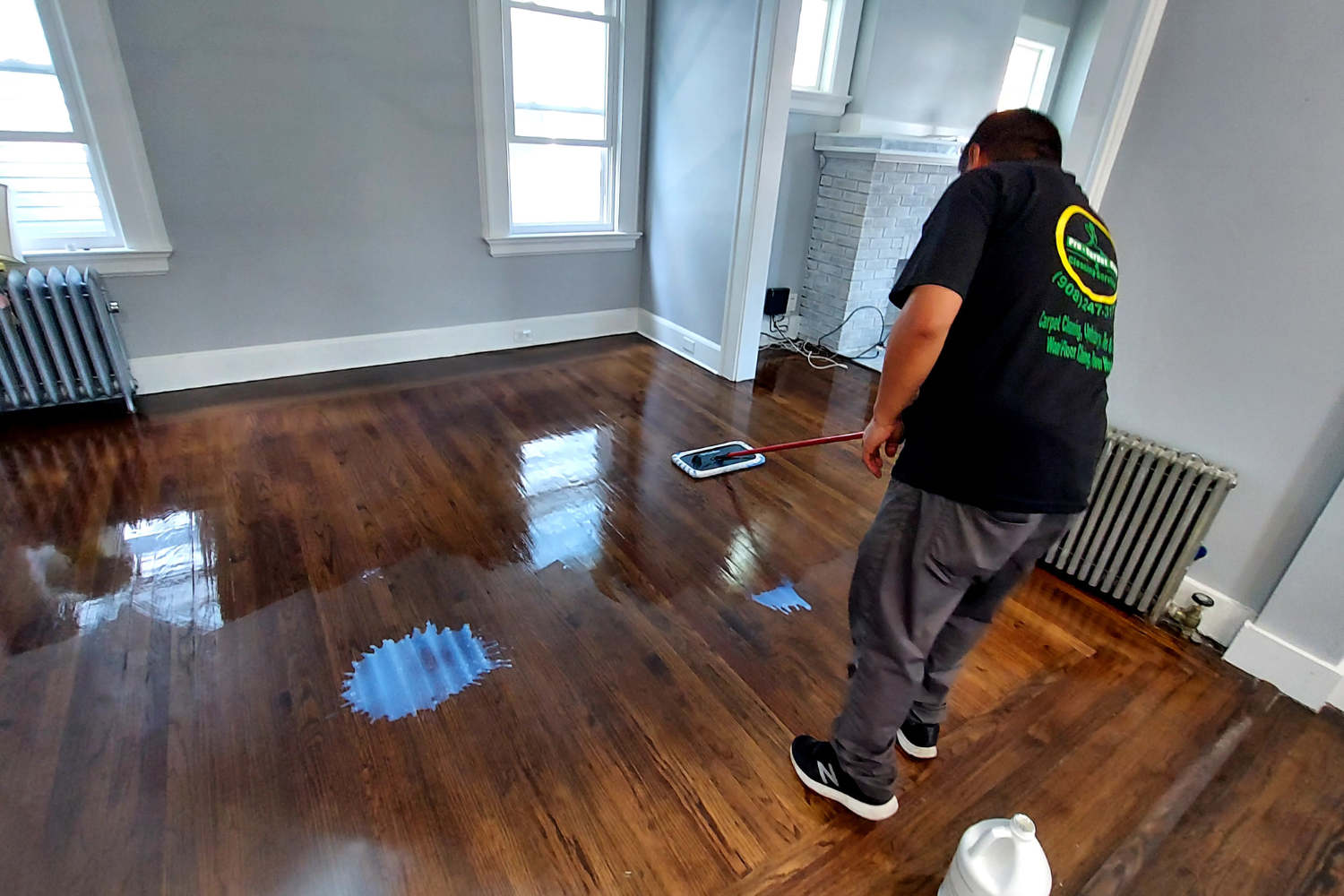
Why Hire a Professional to remove wax from hardwood floors:
While DIY wax removal can be a cost-effective solution, there are several advantages to hiring a professional:
- Expertise and experience: Professional floor cleaners have the knowledge and experience to handle different types of wax build-up and wood flooring. They can effectively assess the condition of your floors and use appropriate techniques to achieve optimal results.
- Time and effort-saving: Wax removal can be a time-consuming task, especially if the build-up is extensive. Professionals have the necessary tools and equipment to complete the job efficiently, saving you valuable time and effort.
- Quality results: Professionals have access to specialized cleaning products and techniques that can provide superior results. They can restore the natural shine and beauty of your wood floors without causing damage.
- Preventive maintenance: Hiring professionals for wax removal allows them to inspect your floors for any underlying issues or potential damage. They can provide recommendations for ongoing maintenance and help extend the lifespan of your wood flooring.
List of Equipment and Materials for wax removal:
If you decide to remove wax build-up yourself, here’s a list of essential equipment and materials:
- Soft-bristle broom or vacuum cleaner
- Microfiber cloth or mop
- Mild wood floor cleaner
- Warm water
- Professional Floor Stripper
- Soft towels
Hardwood Floor Maintenance
Removing wax build-up from wood floors is a crucial step in maintaining their natural beauty and prolonging their lifespan. Whether you choose to tackle the task yourself or hire a professional, it’s important to follow the proper steps and use appropriate equipment and materials. By restoring your wood floors to their original luster, you can enhance the aesthetic appeal of your home while ensuring their long-term durability.
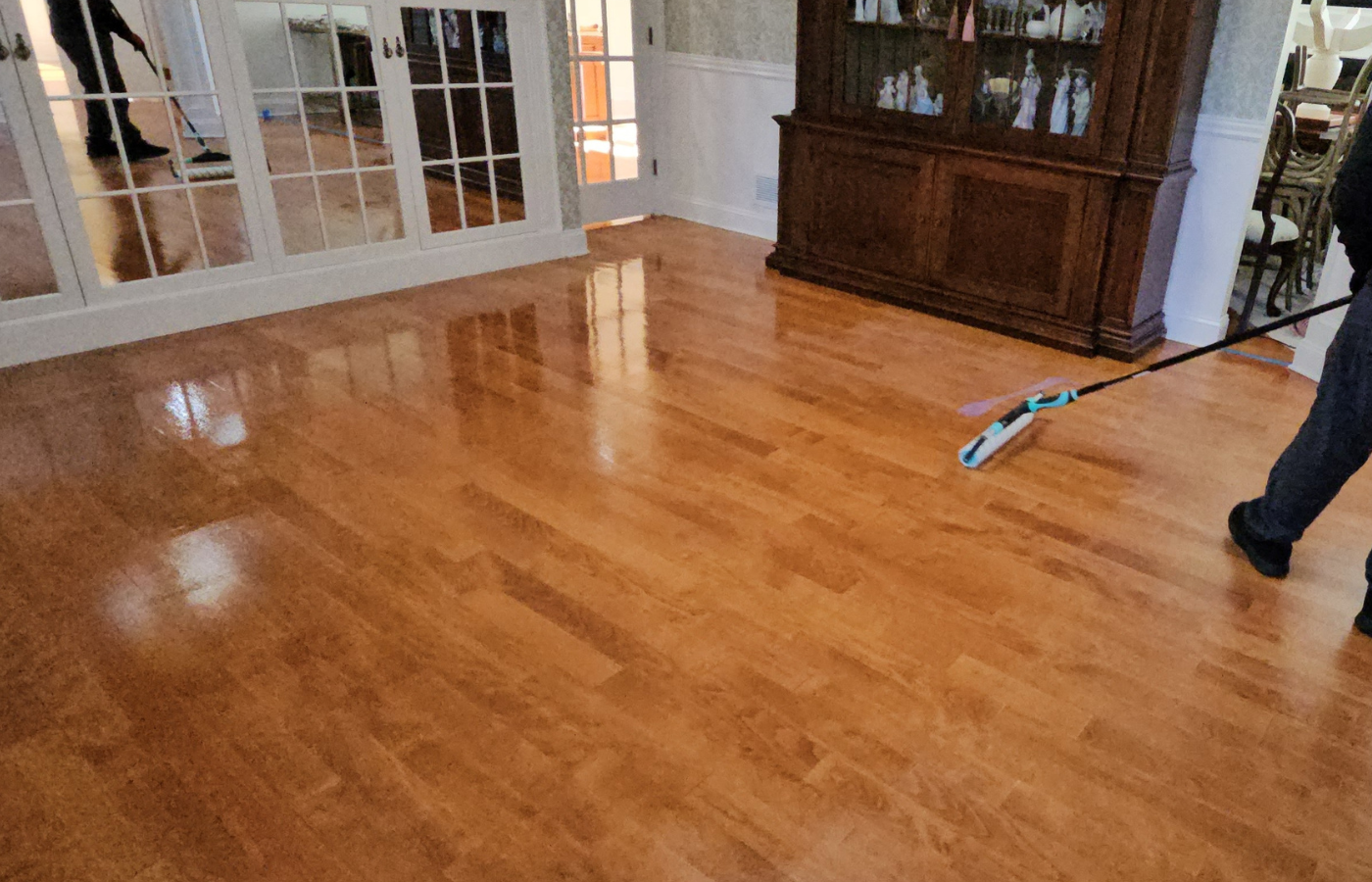
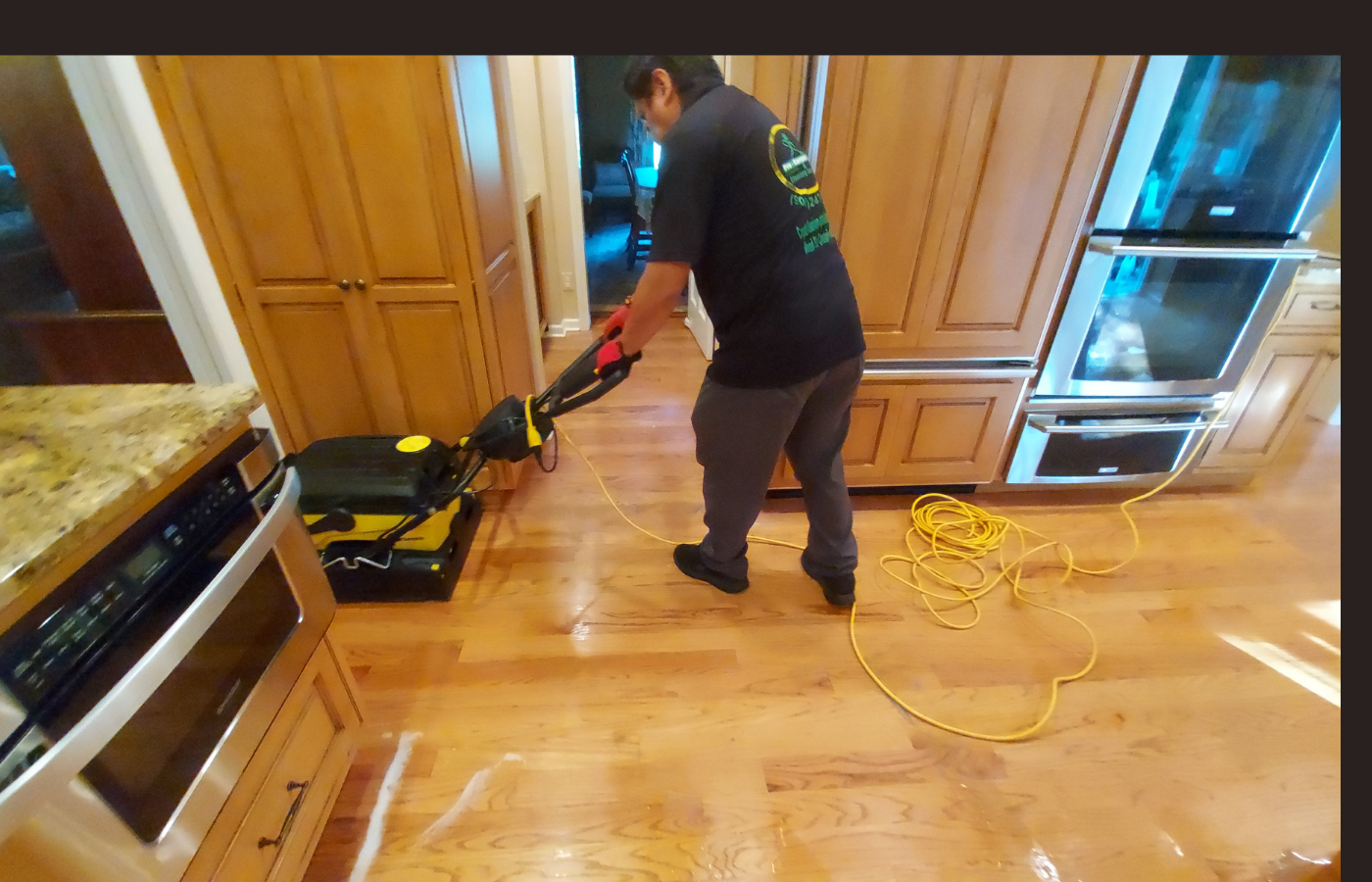
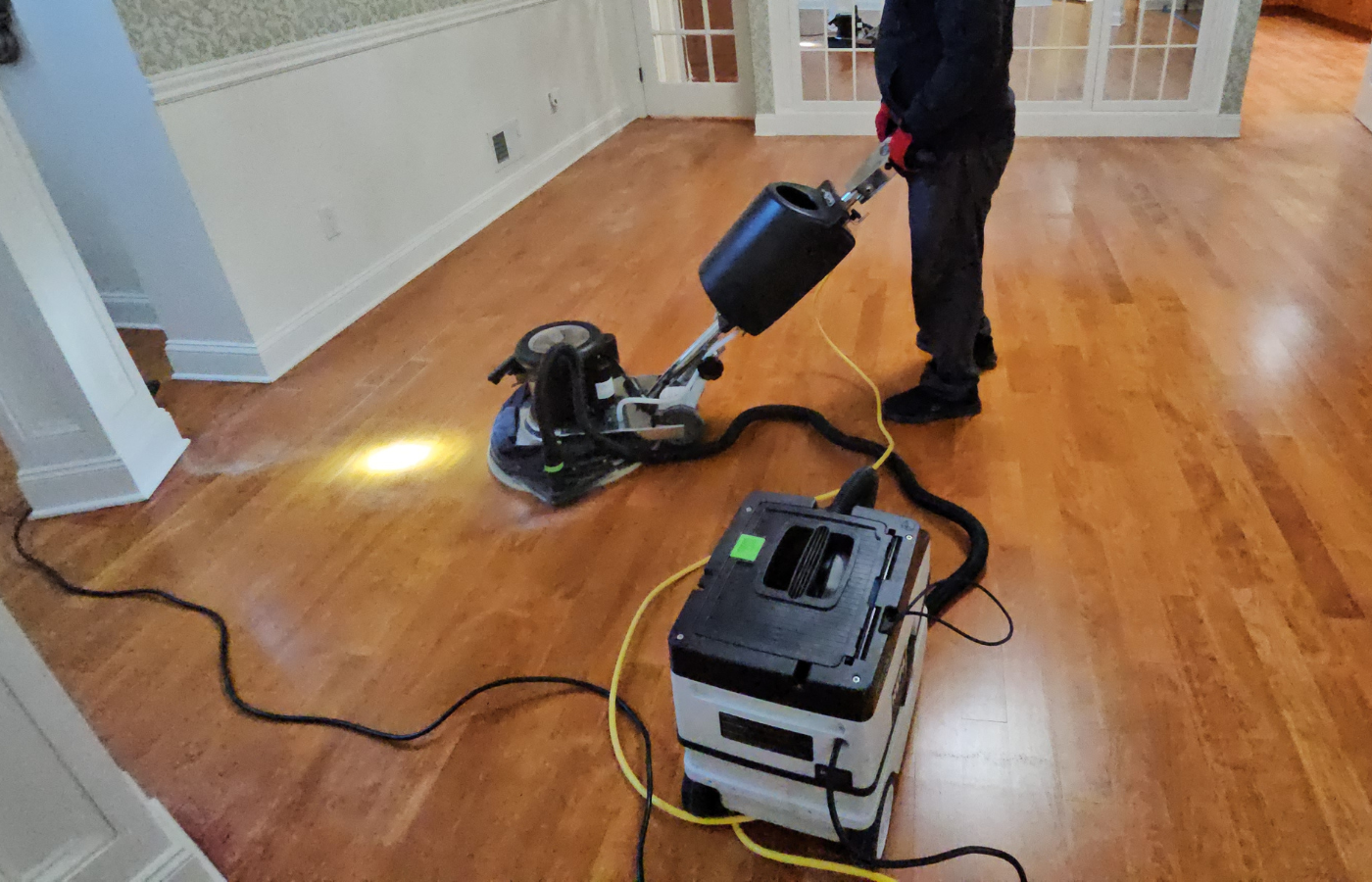
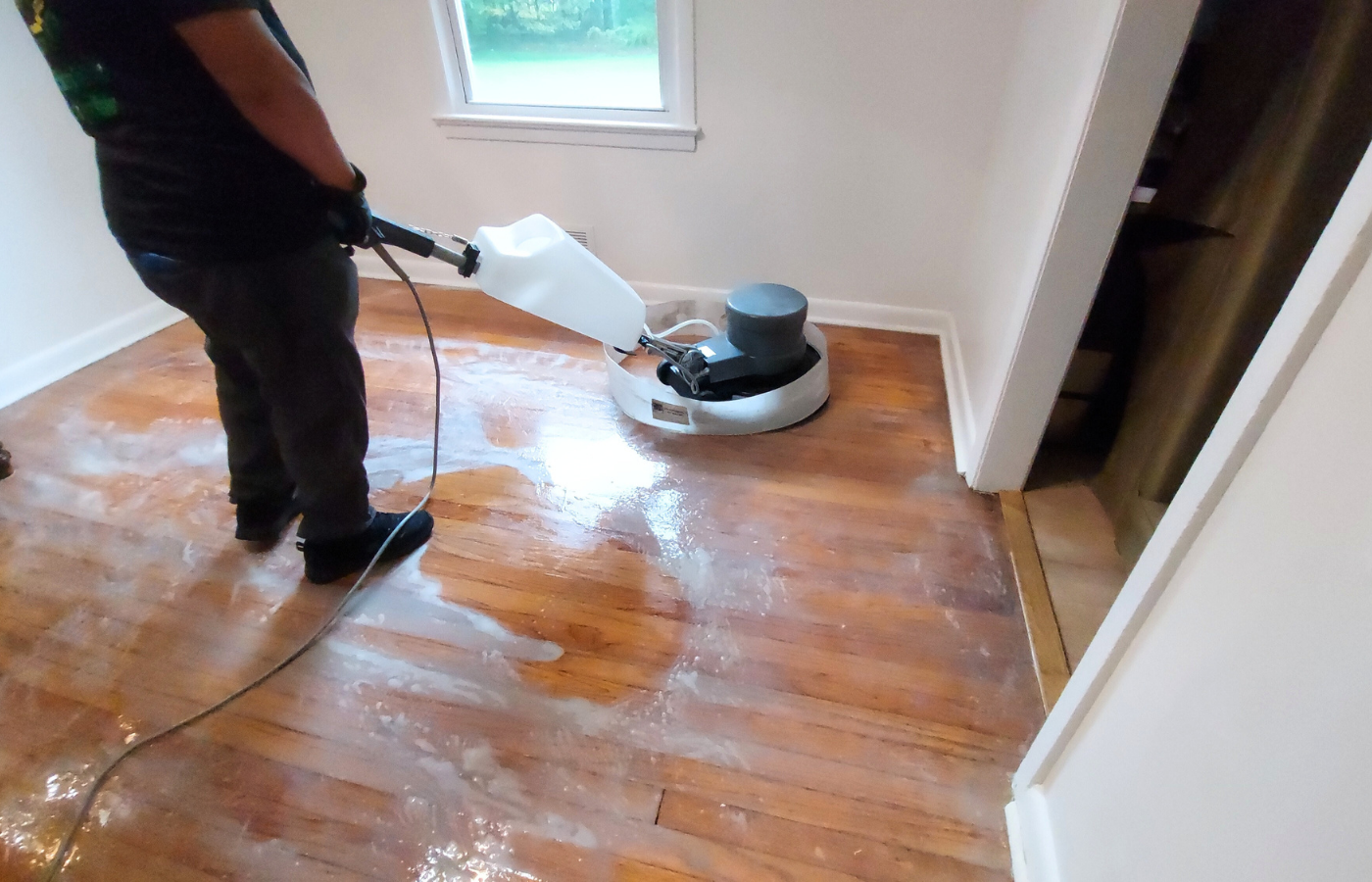
Floor Cleaning Topics:
- Steam Carpet Cleaning -Summit NJ
- How to dry carpet after cleaning
- How to get rid of odor in carpets
- Basement water damage -steam carpet cleaning
- Lear how to clean wood floor
- How often should I clean my carpet?
- Best Homemade carpet cleaner
Looking for a Specialist Floor Cleaning Company near you?
Is it better Shampoo or steam cleaning?
Steam cleaning stands out as a supremely effective method, owing to its advanced technology and integrated machinery. Moreover, the infusion of hot water and cleansing agents ensures a swift and thorough penetration into upholstery, surpassing the efficacy of traditional shampooing techniques.

General Questions
How expensive is Clean & Recoat?
Prices will vary but typically a contractor will charge you less than what they would charge you for sanding and refinishing the floor. Pricing will depend on how much time they spend cleaning a floor, the type of finish they use and the number of applications of finish they make. Get several estimates but pay careful attention to how long they will take, how they will prep the surface and the type of finish they will use.
Is this a dusty, smelly process?
The smell of the chemicals used to clean the floors is comparable to typical household cleaners and are not toxic or hazardous. The buffers we use have dust containment systems attached to vacuums to minimize any dust from prep work. We only work with waterborne urethanes that have no offensive odors. Done correctly, Clean & Recoat is the least invasive recoating process on the market today.
How log will a Clean & Recoat last?
With proper care and maintenance and by following a common sense approach to reduce wear and damage, a floor that’s been recoated can give you years of excellent service. I’ve seen floors that I recoated more than ten years ago that are still in very good shape. Most floors that are being recoated will be getting a waterborne finish and these finishes are very good and easily maintained.
What is Laminate Flooring?
Laminate flooring is a tongue and groove interlocking flooring system that comes in either planks or squares. All of these floors have a wear layer, a decorative print film layer, an inner core structure, and some type of backing support layer — usually melamine. The print film layer is either fused or glued to the inner core. The print film can be a photo of any real floor. The earlayer is applied to the decorative print layer to protect the pattern. Melamine resins are the main component of the wearlayer. The melamine surface gets its incredible durability from aluminum oxide. Aluminum oxide is almost as hard as diamonds and provides unsurpassed wear and stain resistance.
What is Engineered Flooring?
Engineered flooring is produced by bonding three or more layers of wood. The crossing of grain direction within the boards makes this a very dimensionally stable product able to resist nearly all expansion and shrinkage from normal moisture changes. This is one primary feature that makes it suitable for use directly on concrete and below-grade application.
Will my floor age or change color?
Yes. You can expect to see shade differences in your floor over time. The cause is usually from exposure to the ultra-violet rays of the sun, whether direct or indirect. This color change will be more noticeable in lighter colors, which will darken over time. In addition, certain species like Brazilian cherry, will naturally darken over the years. These changes are due to the natural characteristics of wood and are not covered by most manufacturers’ warranties.
What is Custom Finishing?
Sanding and refinishing performed to individual specifications. Custom finishing of wood floors is performed in the home on the completely installed new floor, or to refurbish a previously finished floor. Custom finishing permits the owner to select from a full range of stains, sheens and colors.
Residential Wood Floor Cleaning
Commercial Wood Floor Cleaning
